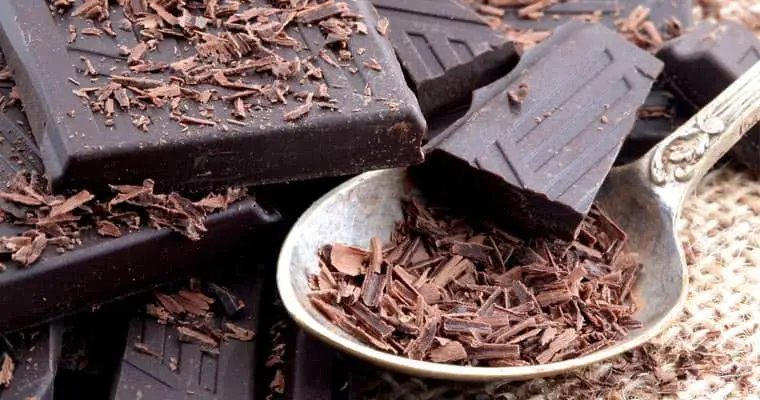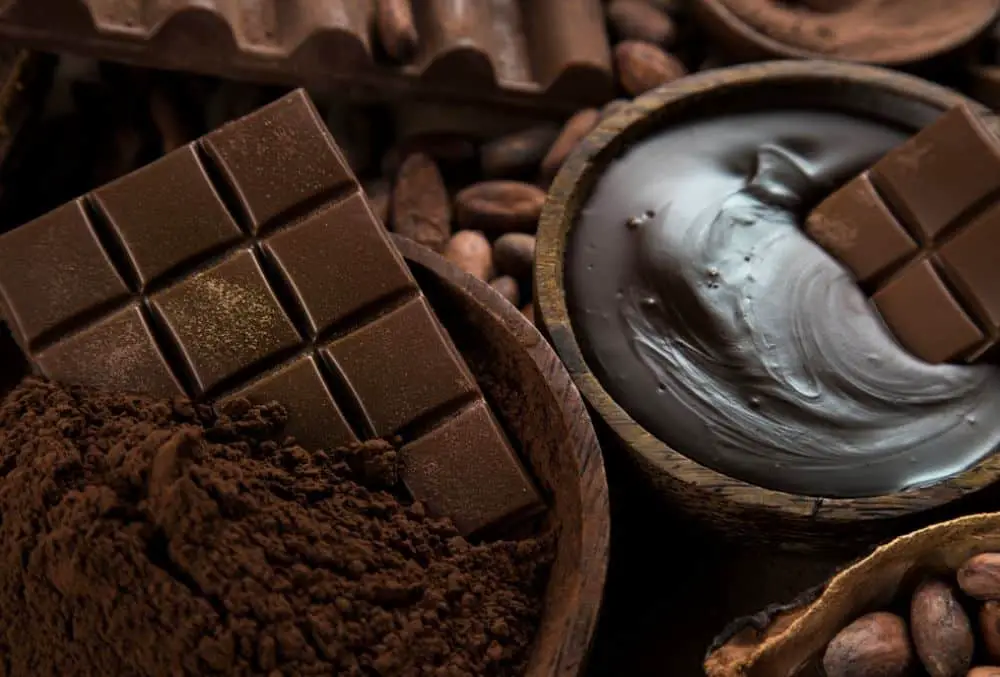The lovers of dark chocolate they may have been alarmed by a 2023 Consumer Reports finding that some brands of dark chocolate may contain harmful levels of lead and cadmium.
Some brands of dark chocolate are unsafe
A new study from Tulane University published in Food Research International found that dark chocolate poses no adverse risks to adults and contains nutritionally beneficial levels of essential minerals.
The study sampled 155 dark and milk chocolates from various global brands sold in the United States and tested for the presence of 16 heavy metals ranging from toxic (lead and cadmium) to essential (copper, iron, zinc). The study then modeled the risk of eating one gram of chocolates per day as equivalent to consuming more than two whole chocolate bars per week.
The research found that only one brand of dark chocolate exceeded the international limit for cadmium in bars containing more than 50% cocoa (800 micrograms per kilogram) and only four dark chocolate bars had levels of cadmium that could pose a risk to children weighing 33 pounds or more. less, the average weight of a 3-year-old in the United States.
“For adults there is no adverse health risk from consuming dark chocolate, and while there is a slight risk for children in four of the 155 chocolate bars sampled, it is not common to see a 3-year-old regularly consuming more than two chocolate bars a week,” said lead author Tewodros Godebo, assistant professor of environmental health sciences at Tulane University School of Public Health and Tropical Medicine. “What we found is that it is quite safe to consume dark chocolate and milk chocolate.”

When tested for lead, two chocolate bars contained levels above California’s interim standards for dark chocolate, but neither bar was determined to pose any adverse risks to children or adults.
While two previous studies in the United States examined the presence of lead and cadmium in chocolate, this study used the largest sample, expanded the scope of the test to 16 metals, and included a risk assessment of toxic metals that took into account of the nutritional contribution of the essential elements. minerals.
Dark chocolates were found to contain high levels of nutrients such as copper, iron, manganese, magnesium and zinc, and many of the chocolates sampled provided more than 50% of the daily needs of children and adults, Godebo said.
“Not only is it rich in these essential minerals, but they can potentially reduce the absorption of toxic metals in the gut as these metals compete for the same site,” Godebo said.
The study found that much of the lead in chocolate comes from post-harvest processing, while the cadmium comes from the soil and passes through the plant and into the cocoa bean.
The researchers also classified the chocolates geographically and found that dark chocolates from South America had higher levels of cadmium and lead than chocolates from Asia and West Africa, the latter of which is a primary source of dark chocolate for the United States.
“But even for chocolate from South America, we found that there is no negative risk in eating a gram of it a day,” Godebo said.
The smell of dark chocolate, demystified
Chocolate is one of the most consumed delicacies worldwide, and the smell alone is usually enough to spark strong cravings in even the most disciplined eaters. Just like a good wine, high-quality dark chocolate has a multi-layered aroma and flavor, with notes of vanilla, banana or vinegar. Now, researchers report in the ACS Journal of Agricultural and Food Chemistry which substances and how many of them make up this heavenly aroma.
Flavor is much more than what the tongue tastes: smell also plays a key role, with many compounds working together to create a unique sensory experience. Although nearly 600 compounds have been identified in chocolate over the last century, only a fraction of them are known to contribute to flavor.
Previous studies have identified the compounds responsible for the scent of milk and dark chocolate, but it’s unclear how much of each component is needed to make something smell specifically like dark chocolate. To unravel this olfactory mystery, Carolin Seyfried and Michael Granvogl decided to create the perfume from scratch for the first time using cutting-edge methods.

The researchers purchased two types of dark chocolate, each with a distinguishable aroma, from a local grocery store. By analyzing the dilution of the flavor extracts, they identified volatile compounds that likely contributed to the bars’ scents. Next, they measured the quantities of the compounds with stable isotope dilution analysis. Some of these substances, such as the violet-scented β-ionone, were quantified for the first time in chocolate.
Finally, using this data, the team reconstructed the aromas of the two dark chocolates, which smelled very similar to the original bars, according to a trained sensory panel. The researchers say this discovery demonstrates that the essential flavor compounds in chocolate have been correctly identified and quantified.
Scientists discover a way to make milk chocolate offer health benefits to dark chocolate
Dark chocolate can be a source of antioxidants in the diet, but many consumers dislike the bitter taste. The taste of milk chocolate is more appealing to a greater number of consumers, but it does not have the same antioxidant properties as dark chocolate.
In a study in the Journal of Food Science, researchers found a way to use peanut husk extracts to make milk chocolate that has even more nutritional benefits than dark chocolate without altering its taste.
Researchers from North Carolina State University’s Department of Food Science, Bioprocessing and Nutrition extracted phenolic compounds from peanut husks, a waste product of peanut production, and encapsulated them into maltodextrin powder, a slightly sweet-tasting edible carbohydrate. which comes from starchy foods such as potatoes, rice or wheat. Maltodextrin powder has been incorporated into milk chocolate.

Consumer tests of 80 subjects comparing samples of milk chocolate with and without peanut extracts showed that they liked the fortified chocolates as well as untreated milk chocolate. These tests also demonstrated that the threshold for detecting the presence of peanut husk extract was higher than that needed to fortify milk chocolate at antioxidant levels comparable to dark chocolate.
Since peanut husks are a waste product of the peanut industry’s blanching process, the authors say that including these extracts would allow for a value-added use of the discarded husks.
“If applied to commercial products, peanut husk extracts would allow consumers to enjoy mild-flavored products and be exposed to compounds that have demonstrated health benefits,” explained lead author Lisa L. Dean.
The researchers noted that the allergenicity of peanuts has not been studied, but work is now underway.
In moderation, dark chocolate can be beneficial to your health and prevent coronary heart disease
Contrary to popular opinion, chocolate is not an essential food group. It was said, however, to be a vital part of American soldiers’ rations during the wars of the last century. And when it comes to nutrition, there’s some good news for those of us who love this beloved treat.
Cocoa beans, from which chocolate is obtained, are rich in substances called polyphenols. Among other benefits, human studies have shown that these antioxidant compounds improve blood flow through arteries and help keep blood pressure under control.
In general, more polyphenols reside in cocoa powder and baking chocolate, followed by dark chocolate, semisweet, and milk chocolate. And, be careful, chocolate has been identified as a food rich in polyphenols, along with tea and wine.

And while I wouldn’t necessarily recommend eating chocolate for its nutrient content, it does contain a decent amount of essential minerals, including magnesium, iron, and zinc.
Chocolate varies in fat content (check the label). But more than half of the fat in cocoa-rich products is in the form of healthful monounsaturated fats and stearic acid, a “good boy” saturated fat that might actually be good for our hearts, according to USDA Food Data Central.
As scientists continue their exhausting study into the properties of chocolate, several analyzes of this much-loved food suggest that, consumed in moderation, chocolate may not be harmful but may actually confer some benefits to our health, according to a 2021 review published in magazine, Nutrients.
How moderate is it? In 2021, researchers reporting in the European Journal of Preventive Cardiology calculated the association between chocolate consumption and heart disease risk in more than 300,000 people from six prospective studies. Their final result was that “the benefits of the nutrients contained in chocolate appear promising and consuming chocolate at least once a week may be beneficial for the prevention of coronary heart disease.”
#dark #side #dark #chocolate
